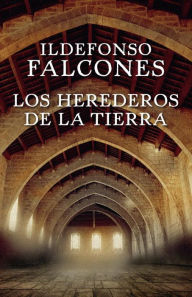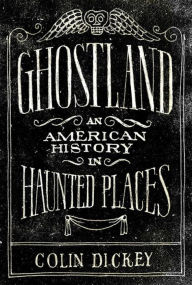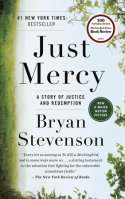Yikes! Obviously I haven’t been here! I’m not exactly sure why…though I think it’s a combination of feeling like “meh, not that many people really read my blog or care what I think” and “wait a minute, now that I’m actually (sort of) working again, I’d rather be reading than writing about my reading!” So where have I been…?

Well, first I went back to medieval Barcelona with Los herederos de la tierra (The Inheritors of the Earth) (Vintage Español, 2016), a novel by one of my favorite Spanish authors, Ildefonso Falcones. This is a sequel to his immensely popular La catedral del mar/The Cathedral of the Sea, which unlike his newer book is available in English translation and is, frankly, a much better read. Still, I enjoyed immersing myself in the setting, as well as the challenge to my language skills that reading something this dense and complicated provides. If you like quality historical fiction, I recommend you give one of his novels a try. In addition to The Cathedral of the Sea, La reina descalza/The Barefoot Queen and La mano de Fátima/The Hand of Fátima are also excellent options, all transporting the reader to a time in the past that is captured with vivid details and compelling characters.

Then I branched out to a fictional setting in the Mediterranean (or is it?) with Meet Me in Atlantis: Across Three Continents in Search of the Legendary Sunken City (Dutton, 2016), by Mark Adams. I had really enjoyed his Turn Right at Machu Picchu, and this book also entertained and informed with its combination of self-deprecating humor, solid research, and fascinating subject. It did, though, also reinforce my desire to go back to places like Malta and Cádiz…

However, since that wasn’t in the budget, I instead then went to South Africa and Sweden (at least in my imagination) with an absolutely delightful novel, The Girl Who Saved the King of Sweden (HarperCollins, 2014), by Jonas Jonasson. Left in my guest room by a dear college friend and her Swedish husband who had been visiting, it was a lovely surprise that had me laughing out loud in parts and then recommending it to anyone and everyone. The political jabs were just what I needed in my post-inauguration despair, and I couldn’t help but notice a direct line between the early-modern Spanish pícaro (picaresque) genre with its pointed satirical skewering of society and this narrative’s highly unlikely yet compelling and weirdly believable modern heroine.

My next volume took me into the very real politics and sadly misogynistic world of Early Modern Europe. Game of Queens: The Women Who Made Sixteenth-Century Europe (Basic Books, 2016), by Sarah Gristwood, starts with the Spanish queen, Isabel, her daughter, the ill-fated Catherine of Aragon, and the other European royal women (and often family members) who shaped that critical period. She ends with the conflict between Elizabeth I and Mary, Queen of Scots, along the way providing easily readable while also solid academic research into the lives and interactions of some remarkably perceptive and talented women.

On my daughter’s recommendation, I returned to more recent history and the United States for my next read. Ghostland: An American History in Haunted Places (Penguin Publishing Group, 2016), by Colin Dickey, took me to places I’ve been, like Salem and Charleston, as well as new sites with which I was previously unfamiliar. I’ve always been annoyed by the way modern Salem, in particular, almost trivializes the very real persecution and suffering of its famous “witches” , and using this odd juxtaposition as his starting point, the author takes a fascinating tour of what it is about places that makes us humans think they are haunted. He debunks quite a few theories along the way, though never quite coming out and saying what he personally believes about paranormal phenomenon. The research is extensive and top-notch, and the writing is both engaging and intellectually stimulating. While I know people who insist they’ve seen ghosts, I never have, so I won’t weigh in with an opinion on that. I will just say that if you like American history and what it has to teach us about who we are in the present, this is an outstanding volume.

Set in the uniquely haunted culture of white, working-class, Rust Belt America, the next stop on my reading journey was Hillbilly Elegy: A Memoir of a Family and Culture in Crisis (Harper, 2016). Author J.D. Vance challenged me to look at current events in a new way, and I appreciate his perspective on a subset of my fellow American citizens that I frankly struggle to understand and empathize with. The writing is exquisite and engaging, even if I sometimes found it to be overly self-referential. (Of course, I guess that’s what a memoir is, after all.) The book is certainly deserving of the praise and attention it has received. One question it left me with, though, is this: while I’m seeking to understand the voter who has subjected me to our current occupant of the White House, are the people who put him there even remotely interested in trying to understand me? I have my doubts.

So, what the heck, since I was already feeling pessimistic about America and its current trajectory, why not wallow a bit more? So I tackled Just Mercy: A Story of Justice and Redemption (Random House, 2014), by Bryan Stevenson. This book had been on my radar for several years, ever since I first heard the author interviewed on NPR, and while it is quite different from Hillbilly Elegy, in many respects it tackles the same issues of how the poor and dispossessed are treated in this country. It was a difficult book to read. I was often enraged by the racial prejudice both the author and his clients encountered, as well as by how cavalierly public officials who would probably profess their “Christian” beliefs to you can turn around and toss away human lives in the supposed pursuit of being “tough on crime”. Of course, I might be influenced by the more than thirty years I spent in the public school system, where I saw first hand bright, intelligent, thoughtful young people ignored, abused, neglected, and then excoriated and punished when they made the mistakes we humans tend to make. While the overarching narrative of the book is about the case of Walter McMillian, who was wrongly condemned to execution by white law enforcement and judicial officials under pressure to “solve” a murder, Stevenson also examines the many injustices rampant in the American legal system. Published before the latest election, I can’t help but wonder how the new Attorney General is going to set back the lifetime effort Stevenson has put into advocating for the poor and voiceless among us. I admire people like Bryan Stevenson, and continue to search for ways I can make my own small contributions to making this country a better place. I found his chapter, “Broken” to be especially resonant. In it, he struggles with anger over the imminent execution of a severely disabled client who suffered horrible abuse as a child. But then…
I began thinking about what would happen if we all just acknowledged our brokenness, if we owned up to our weaknesses, our deficits, our biases, our fears. Maybe if we did, we wouldn’t want to kill the broken among us who have killed others. Maybe we would work harder for solutions to caring for the disabled, the abused, the neglected, and the traumatized. I had a notion that if we acknowledged our brokenness, we could no longer take pride in mass incarceration, in executing people, in our deliberate indifference to the most vulnerable.
I like to think that good writing, good books, and deep reading are valid and important steps in this process.
More information about Just Mercy.
More information about Bryan Stevenson.
I received Just Mercy from Blogging for Books for this review.